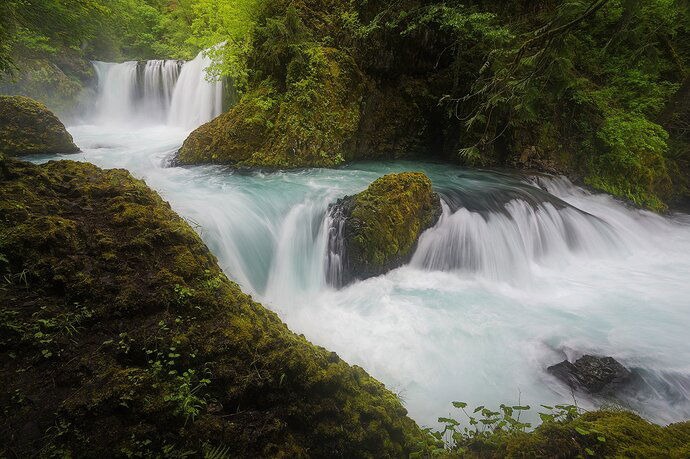Hi John,
I followed the comments in your previous post but I didn’t feel like I had anything of value to add. This post however, seems to be one where I might be able to add something, I’m not sure how valuable it will be though.
Until a few weeks ago, I never really explored the B&W genre in terms of purpose and value, I had always looked at B&W as just a way of imitating antique photography but a comment left on one of my images sparked my interest and curiosity, it was suggested that I should convert it to B&W to accentuate the shapes.
The comment that sparked my curiosity was: “The Colors are Too Distracting”.
My knee jerk reaction was a simple “WHAT?”, “Color is Too distracting?”, what the heck is that all about? Why did he say that? I was almost offended but I figured it would be best if I study the B&W genre to try understanding what he meant.
I decided to use an image that had a compelling story as a test image for B&W.
After some time spent tweaking lights and darks, it started to sink in what he meant.
At the link below, you can see the image in color and in B & W. It’s an elderly lady needing heart surgery, she is sitting outside of a church hoping people will help her out as they pass by.
Link >> Help Me - Heart Surgery Needed <<Link
In the color version, the viewer will likely notice that the lady is asking for handouts but they may not take the time to figure out why she’s asking for handouts.
But the B&W version is very different because the viewer isn’t “Distracted” by the colors which means it’s more likely they will spend enough time to see the story of her needing heart surgery.
Removal of color can be as effective as removing a lone distracting limb that doesn’t belong in a scene.
I’m hoping that someone reading the above story will benefit from my initial venture into B&W.
I’m a little slow at discovering things sometimes but “Better late than never”, right 
When it comes to your image in this post, you want the viewer to feel the power of the water as you did when you were there (I hope I am understanding that correctly). Personally, I don’t think any image or video can ever achieve that to the same degree. The only thing that comes close is sparking a memory in the viewer but that depends on if the viewer has experienced such an event in person.
I do think you’re on the right track though, by removing the color, it pushes the focus onto the water as you intended, the downside is that the surrounding foliage is still fairly bright, so the question becomes “Are the bright highlights in B&W also a distraction?” Should those highlights be brought down so the foliage is less noticeable?
I purposely exaggerated the darkening of the highlights for demonstration purposes.
So now we’ve removed the color and we’ve removed the brighter highlights, does that work better? I don’t know.
OK, what about the color in the water? Have we removed part of the sense of power in the water by removing the color of the water?
Do we want the viewer to struggle to figure out how deep the water is by evaluating the dark areas? Dark areas in water in a B&W image can mean that there’s a slab of rock just under the surface, or it can mean the water is deeper there, but which is it?
Color in water usually indicates that it’s deep in that area, the darker the color, the deeper the water.
So, now the question becomes: “Do we convert the foliage to B&W but leave the water in color?”
That looks kind of odd doesn’t it? I’m not sure that an image with B&W foliage with colored water is what we want to put out there, do you?
Now, what about leaving the foliage in color but convert the water to B&W, does the removal of color from the water accentuate the foliage? Personally, I don’t think it has the same effect as converting the foliage to B&W because we commonly see water with no color.
Now, what about the idea of converting to B&W but reduce the opacity of the B&W mask to roughly 50% so there is still color in the foliage (albeit muted), then leave the color of the water at full strength?
Does that help to direct focus to the power of the water in an effective way? I don’t know.
Those were all rhetorical questions BTW, not expecting an answer 
These kind of things are worth spending some time thinking about and exploring in post processing in my humble opinion because in my mind, it’s worth trying to figure out the most effective way to present our images so they do convey the emotions and/or messages that we intend to convey.
In my very humble opinion, the most effective image we can put out there is one that triggers a special memory in the viewer’s mind.
This has turned into more of an article than a response, sorry about that.
Bottom line is this; I am not recommending any changes at all, I just put this out there as food for thought.
BTW, I’ve looked at this in so many different ways, I don’t think I can pick a favorite 
And finally (aren’t you glad?), I really enjoy this image because for me, it does absolutely trigger special memories of my time exploring Transylvania County in Western NC, I had a three week photoshoot trying to photograph all 250 waterfalls in that county.
Hmmm, this triggered another thought, I might be interested in doing that again with modern gear, especially since I’m retired now. Thanks for that!
All the best! 








